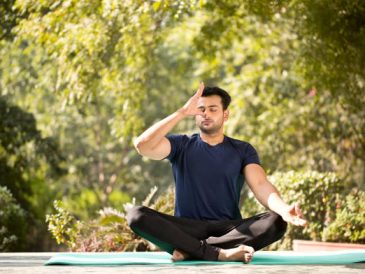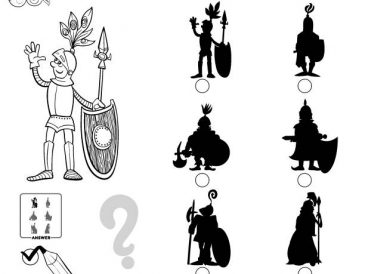In recent decades, yoga has spread its tendrils across the globe, captivating millions with its promise of physical well-being, mental clarity, and spiritual growth. Originating in ancient India, this holistic discipline has transcended cultural boundaries to become a global phenomenon. However, as it gained popularity worldwide, yoga underwent various transformations, sometimes losing touch with its roots along the way. Yet, in recent years, there has been a resurgence of interest in traditional forms of yoga, bringing the practice back to its authentic essence. This resurgence is not just a revival; it’s a reconnection with the rich heritage and wisdom that birthed this ancient tradition.
The journey of yoga from its humble beginnings in the Indian subcontinent to its current status as a global wellness trend is a fascinating tale of cultural exchange, adaptation, and evolution. Rooted in ancient scriptures such as the Yoga Sutras of Patanjali and the Bhagavad Gita, yoga was initially practiced by sages and ascetics as a means to attain spiritual enlightenment. It was a deeply personal and reflective practice, far removed from the commercialized versions seen today.
The introduction of yoga to the Western world can be traced back to the late 19th and early 20th centuries when Indian yogis such as Swami Vivekananda and Paramahansa Yogananda began sharing their teachings with Western audiences. These early pioneers planted the seeds of yoga in the West, sparking interest among intellectuals, artists, and seekers of spiritual truth.
However, it wasn’t until the latter half of the 20th century that yoga truly began to gain momentum in the West. Influential figures such as B.K.S. Iyengar, Pattabhi Jois, and T.K.V. Desikachar played pivotal roles in popularizing different styles of yoga, such as Iyengar, Ashtanga, and Viniyoga, respectively. Their teachings emphasized the importance of alignment, breath control, and mindfulness, laying the foundation for the modern yoga practices we see today.
As yoga gained popularity in the West, it underwent a process of adaptation and innovation to suit the needs and preferences of Western practitioners. This led to the emergence of various hybrid forms of yoga, such as power yoga, hot yoga, and aerial yoga, which often placed more emphasis on physical fitness than spiritual growth. While these forms of yoga attracted a broad audience and contributed to the mainstream acceptance of the practice, they also raised questions about authenticity and cultural appropriation.
In recent years, there has been a growing awareness of the need to reconnect with the authentic roots of yoga and honor its cultural heritage. This shift is fueled by a desire to preserve the integrity of the practice and acknowledge its indebtedness to the Indian traditions from which it emerged. Yoga practitioners and teachers around the world are increasingly turning to ancient texts, Sanskrit chanting, and traditional teachings to deepen their understanding of yoga and enrich their practice.
One of the most significant developments in this regard is the resurgence of interest in classical yoga, as outlined in the Yoga Sutras of Patanjali. This text, composed over two thousand years ago, offers a comprehensive guide to the philosophy and practice of yoga, encompassing ethical principles, physical postures, breath control, meditation, and self-realization. By studying and applying the teachings of the Yoga Sutras, practitioners are able to delve deeper into the spiritual dimensions of yoga and cultivate a more profound sense of inner peace and harmony.
Another aspect of yoga’s revival is the renewed emphasis on the holistic nature of the practice, which encompasses not just physical exercise but also mental, emotional, and spiritual development. This holistic approach is reflected in the growing popularity of practices such as mindfulness meditation, pranayama (breath control), and yoga nidra (yogic sleep), which aim to integrate body, mind, and spirit in a harmonious union.
Furthermore, there is a greater appreciation for the diversity of yoga traditions within the Indian subcontinent, each offering unique insights and practices suited to different temperaments and aspirations. Whether it’s the dynamic flow of Ashtanga yoga, the precise alignment of Iyengar yoga, or the gentle therapeutic approach of Sivananda yoga, practitioners are encouraged to explore and embrace the richness of yoga’s heritage.
In addition to reclaiming its spiritual roots, yoga is also experiencing a resurgence in its country of origin, India. After decades of being overshadowed by Western interpretations of yoga, there is a renewed sense of pride and interest in India’s indigenous traditions. This is evident in the proliferation of yoga schools, ashrams, and retreat centers across the country, where both domestic and international students come to study and practice yoga in its authentic setting.
Moreover, initiatives such as the International Day of Yoga, established by the United Nations in 2015, have helped to promote awareness of yoga as a cultural heritage of humanity. Each year on June 21st, people around the world come together to celebrate yoga’s universal appeal and its potential to promote peace, harmony, and well-being on a global scale.
As yoga continues to evolve and adapt to the changing needs of modern society, it is essential to remain grounded in its timeless wisdom and spiritual lineage. By honoring the roots of yoga and embracing its diversity, practitioners can experience the true essence of this ancient tradition and its transformative power to uplift and unite humanity. From India with love, yoga offers a path of self-discovery, healing, and inner liberation that transcends boundaries and connects us to the infinite source of peace and joy within.




